August 21-September 1, 2022
My friend Ruthi and I visited Borneo in August-September 2022. We traveled with Natural Habitat Adventures (@NaturalHabitatAdventures) and our fabulous expedition leader Harsha Jayaramalah and local guide supreme Bedley Asun. We spent 12 days traveling around the country from the south to the north seeing wildlife that can only be found right here in Borneo. I was mostly in charge of photography with my two OM Systems OM D-E M1 Mark III and my Olympus 12-100 f4 and my Olympus 100-400 F5.6. Ruthi also shot with the OM Systems, but she was more responsible for videos.
There is so much to write. So much to tell. So there will be multiple posts, some focused on specific wildlife, some on the cities and the rivers and the amazing resorts we stayed in. But this post is on monkeys. But not just any monkeys. This post is about monkeys you may have never heard of. The proboscis monkeys.
Proboscis Monkeys
The proboscis monkey (Nasalis larvatus) is also called the long-nosed monkey, because, of course, the males have a very, very large and long nose (note the females have small noses)! It can only be found Borneo and is one of the reasons Ruthi and I wanted to travel here.
Why the large nose?
So, why did the proboscis monkey develop this large nose which can be four inches long? This large organ creates an echo chamber that amplifies the monkey’s call and that call impresses the females and at the same time it intimidates the other males.
And what about their large bellies?
In addition to their large noses, proboscis monkeys also have large bellies. In fact, they have nine stomachs and that is why they are sometimes called the cows of the primate world. They are very selective in what they eat, but they have a specialized chambered stomach (called a sacculated stomach) that relies on a host of symbiotic bacteria for digestion and which allows them to eat foods that other primates can’t. And between their diet and their unusual digestive system, they have large bellies.
So what do they eat?
Proboscis monkeys mostly eat leaves, seeds, and unripe fruit. Sometimes they may eat insects. And the reason they eat unripe fruit is because they can’t eat any sweets. Anything with sugar would make the bacteria in their nine stomachs work too fast which would result in fermentation which would produce too much gas in their stomachs. This of couse, would make them very sick, and may put pressure on the organs around the stomach. Unlike all other primates, they can’t even eat bananas as it would kill them.
Our first sighting
On our second day in Borneo, we took a boat ride out to the Bako National Park on the tip of a peninsula. It is here that the Bako River and the Kuching River meet. It is surrounded by sandstone cliffs and rocks – but more on the Bako National Park in its own post – please look for it.
We stepped off the boat, walked across the sandy beach, cleaned off our shoes and went walking along the trails exploring the rain forest here, the jungle streams, the waterfalls. We were looking for all sorts of wildlife and we found them. We found snakes and bugs and lizards and silver leaf monkeys, and so many birds. But I really wanted to see a proboscis monkey.
We were walking along and walking and walking. And then someone spotted a proboscis monkey! It was a female and she was way up in the tree. We could just make out her reddish-brownish-yellowish coloration but we couldn’t see much else. We stood there for quite a while, leaning against a building and just looking up as far as our necks would bend. She was behind some leaves and we waited and waited for her to peek out. And then she did. I was so excited!
Unfortunately, Ruthi was under the weather and missed this sighting. But we would have other opportunities to see these unique creatures.
More about the proboscis monkey
The proboscis monkeys are among the largest of all the monkeys in Asia. The males can reach 50 pounds, and like in most species, the females are smaller, at about half the size of the males. As I mentioned, their skin is a reddish-brownish-yellowish color although when they are born, they are darker. They have a very long tail which helps them balance.
They live in groups which are usually made up of one dominant male and 2-7 females with their babies. When the males mature at about 18 months, they leave their family and join an all-male group for both protection and companionship. The females will also leave the group when they mature and it is thought that they do this to avoid inbreeding or competing for food.
The proboscis monkeys hang out in mangrove forests and the coastal areas of Borneo, never far from the water. Often they will congregate near the water at night to sleep. Within the primate world, they are the most prolific swimmers. While we never saw this, they often leap from the trees and hit the water with a belly flop. Because of their love of swimming, they developed webbed hands and feet which help them swim fast, like the flippers that divers wear, and this helps them out-swim their main predators, the crocodiles found in these waters (of which we saw quite a few).
Oh, and you may notice in the photos, they have a bright red penis and a perpetual erection, which is unique to their species.
Labuk Bay Proboscis Monkey Sanctuary
Our next chance to see these monkeys was a few days later, in Sabah, when we drove to Labuk Bay Proboscis Monkey Sanctuary. This place, which opened in the year 2000, is a safe haven for these monkeys. In the years leading up to the development of the sanctuary, Borneo was hit by an El Nino drought. At the same time, palm oil plantations were springing up everywhere (please see the post on orangutans, which also talks about the palm oil problems). The monkeys were being pushed out of their environment. Without the trees in the south or the Sula Sea in the north, they began looking for other sources of food. And they found pancakes and coffee in the pantry of the Lee Brother’s plantation.
The Lee brothers decided to develop a simple feeding program to help the monkeys supplement their diet – with pancakes! And this grew into the first Proboscis Monkey Sanctuary in Sabah. The sanctuary now covers over 500 acres of coastal mangrove forest and houses the largest isolated population of these monkeys on Borneo.
The Sanctuary’s Vision and Mission
We would all love to see the proboscis monkeys, and all wildlife, live freely in their chosen habitat. But humans keep getting in the way, whether it is by chopping down the forests for palm oil plantations or building dwellings to live in. These are the main reasons the sanctuary was needed. Only 15% of the estimated population of proboscis monkeys in the Sabah area live in protected forests. Most live in other pockets of undeveloped coastal areas which makes them vulnerable to extinction.
At Labuk Bay, the aims are to protect the local population from extinction by preserving their habitat and supplementing their diet, establishing a more sustainable habitat by acquiring and restoring the degraded mangrove forests and by education the locals and visitors about the proboscis monkeys thus advancing the conservation effort.
Observation Area A
Our bus parked and we all eagerly climbed out. We walked down a long, winding wooden walkway over a swampy mangrove area, to Observation Area A. Suddenly, as we walked along, a few monkeys dashed past us. We were so excited to see them that we froze in our tracks.
We continued on, heading towards a huge open area with a wooden platform where all the male bachelors were sitting around eating. There was a large open area, almost like a huge deck with a roof over it for us to stand in. Many of the moneys were on the platform eating and talking, or growling, at each other. Some were running around and others were jumping through the trees.
And the monkeys didn’t just sit on their platform, they ran all over the place, right by us as if we weren’t even there. One, however, ran right past Michael, one of our travel buddies, and shot out his hand and knocked over Michael’s monopod. It was as if he did it on purpose!
We stood there in awe of these creatures. First of all, there were so many of them. Second of all, they were beautiful, even with, or maybe because of their large, unusual looking noses.
These monkeys were so ugly as to be cute. They ate the food on the platform, and then they would vocalize as if wanting to chase each other away.
What do they sound like?
Proboscis monkeys in fact, have a range of vocalizations that generally fall into six categories (infant call, alarm call, mating call, threat call, general honk, and honk to infant). These vocalizations range from chirping and chattering to a nasal honking that sounds something like a cross between a pig and a goose.
Listen for yourselves…
After a while, Harsha had to literally pull us away. We did not want to leave. But we were heading to Observation Area B where we hoped to have a chance to see some females and maybe some babies.
Observation Area B
We drove over to Area B, parked right next to a sign of I Love Labuk. The walk to the viewing area was a bit shorter, but when we got there we were sorely disappointed. There were no monkeys. The people working there told us to be patient, that the females would soon make their way from the forest to the platform. We saw a few in the distance, high in the trees, but they never made it to us.
Area B also had a small gift shop. I would have gotten a t-shirt with the proboscis monkey on it, but there weren’t any. There was also a café, although it was closed.
We were all ready to just stay there and wait. But after a while, Harsha and Bedley made us leave as we were scheduled to catch a boat to Selingan Turtle Island, a protected habitat for the endangered green sea turtles. The island is Malaysia’s first sea turtle hatchery, where the turtles swim ashore to lay their eggs and the tiny hatchlings are released into the sea. We were excited to see that too, so we reluctantly left area B before the females got there.
And then, when we finally got to the boat, the sky opened up with a torrential storm. The rain came down so hard that we couldn’t sail to the island. And we never got to see the turtles.
Instead, Harsha developed a plan B, but that’s another story for another post.
Proboscis Monkeys in the Wild
A few days later, as we floated down the Kinabatangan River, we saw a female proboscis monkey up in a tree, eating leaves just as she was supposed to.
And the next day, we saw another.
Final thoughts on the Proboscis Monkeys
The proboscis monkeys have been helping to protect the forests in the wetlands and mangrove forests by eating the leaves and shoots of plants, thus managing the natural vegetation of tress and the forests. But they are threatened with extinction.
But unfortunately, their habitats are threatened by the rampant clearing of the rain forests for timber, by new settlements and by the palm oil plantations all of which deplete huge areas of their habitat. This has forced them to come down from the trees more often and travel perilously for long distances to find food. This has led to new predators, including jaguars, and more seriously, natives who consider the proboscis monkey to be a delicacy. Today they are protected both from hunting and capture. But still, there are only about 7000 proboscis monkeys left in the wild. And there are none in captivity, ie, zoos, as they don’t survive in artificial settings. Hopefully, our grandchildren and their children, and their children’s children will still get to see these magnificent creatures.
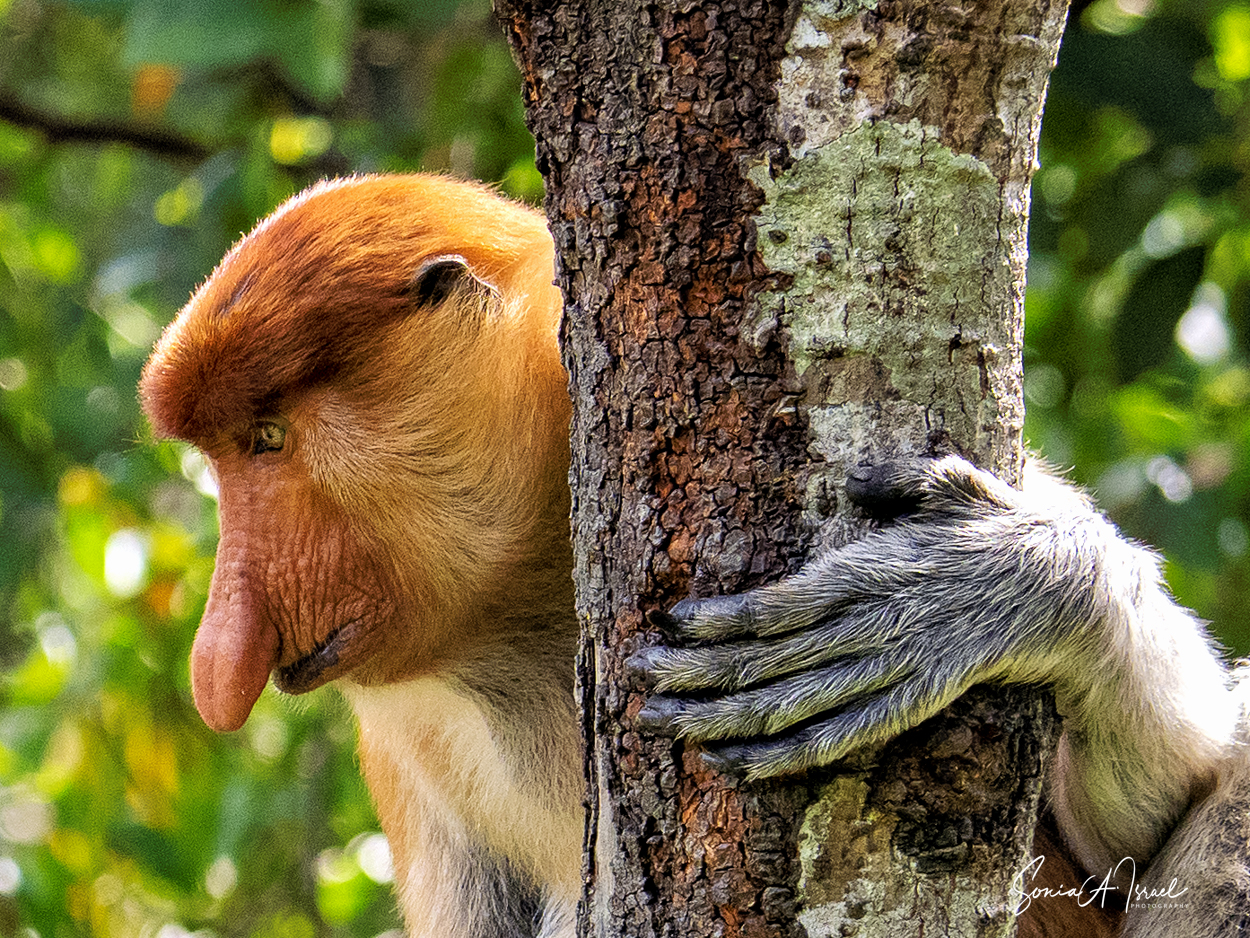
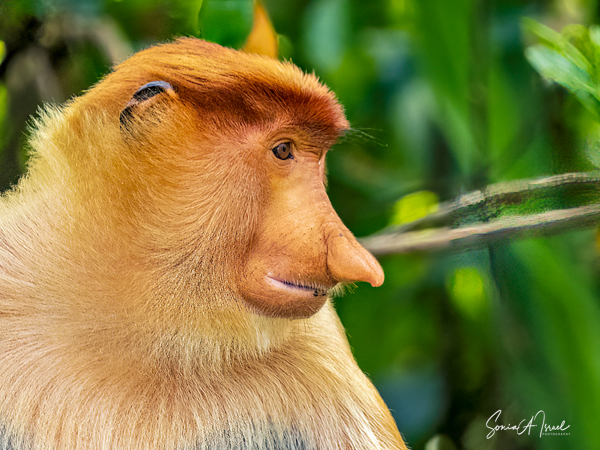
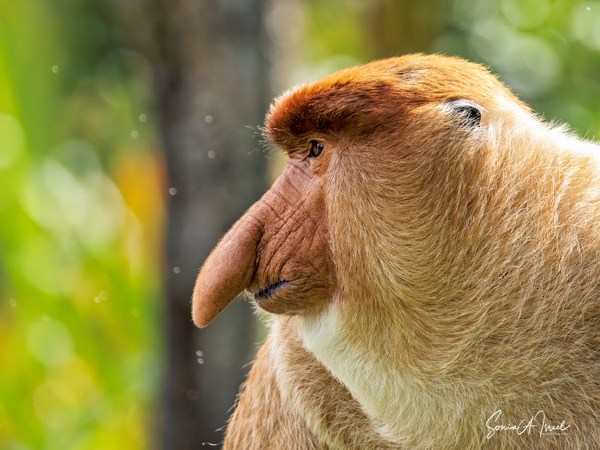
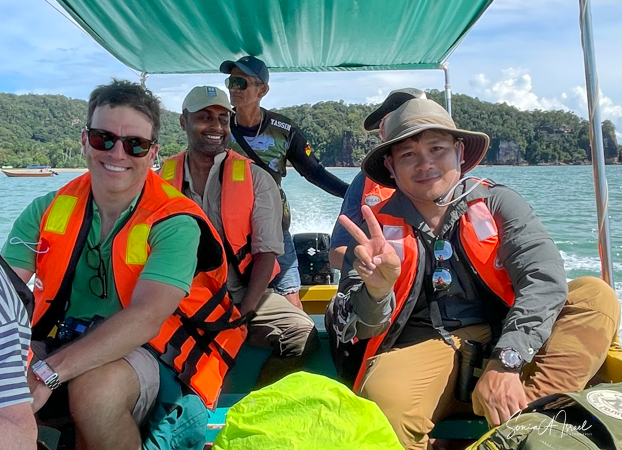

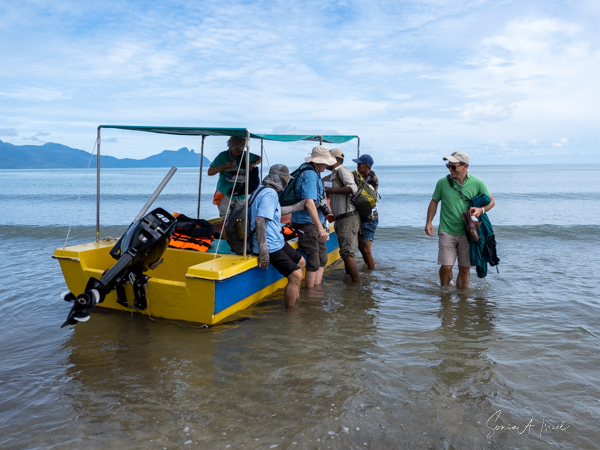
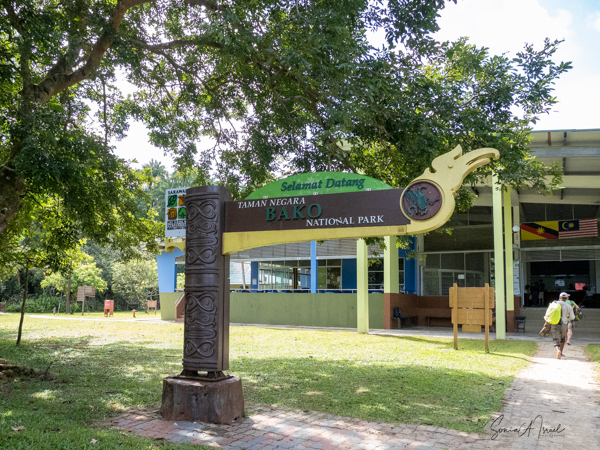
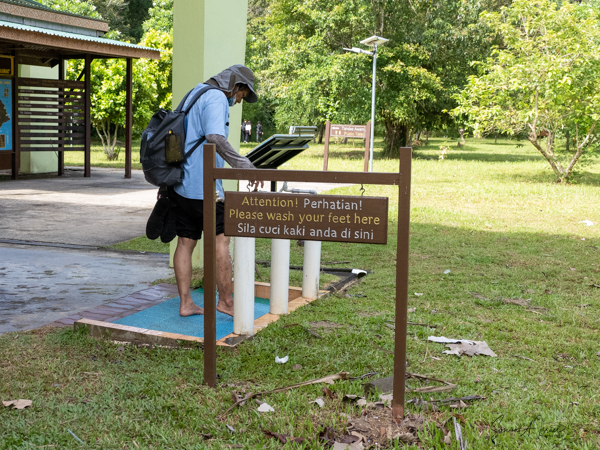

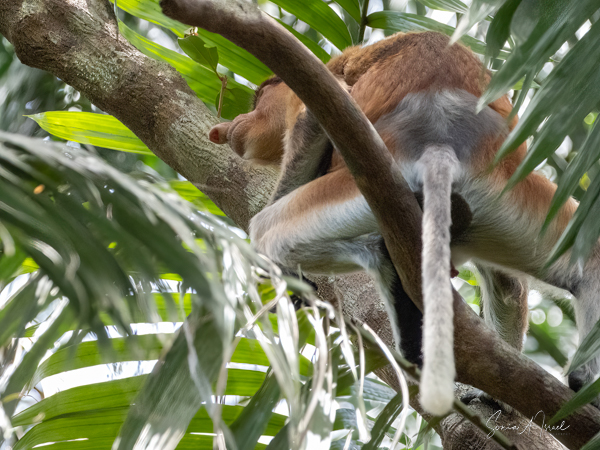

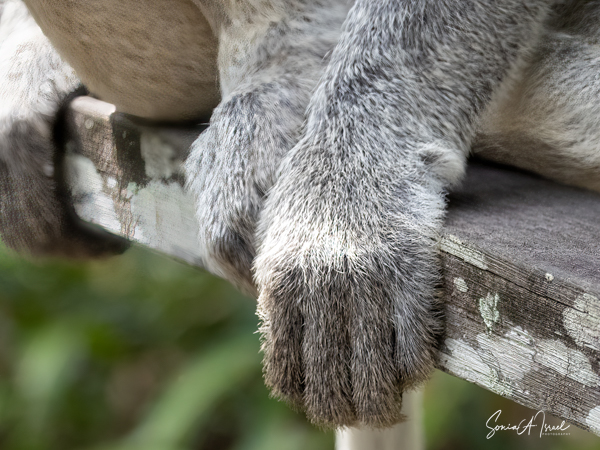
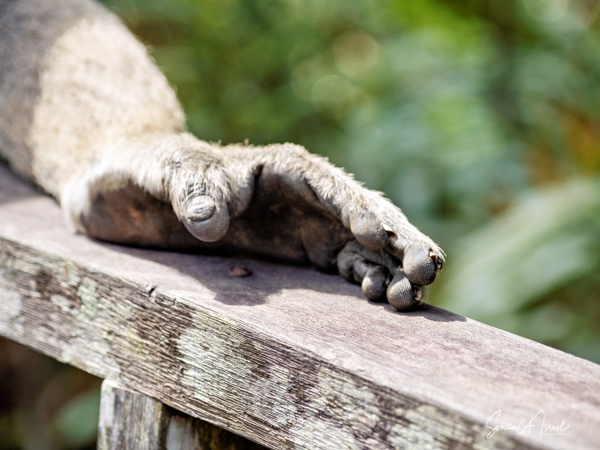


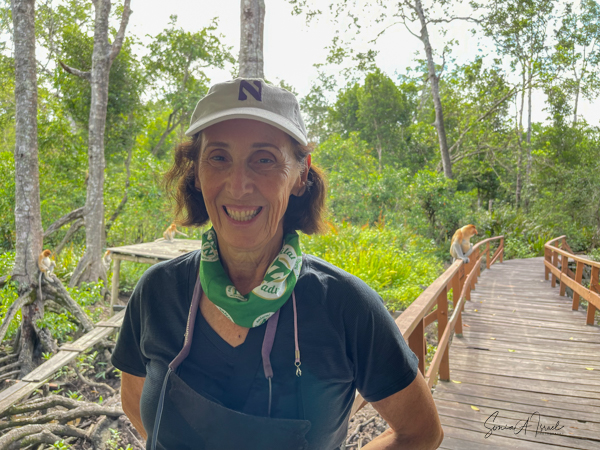




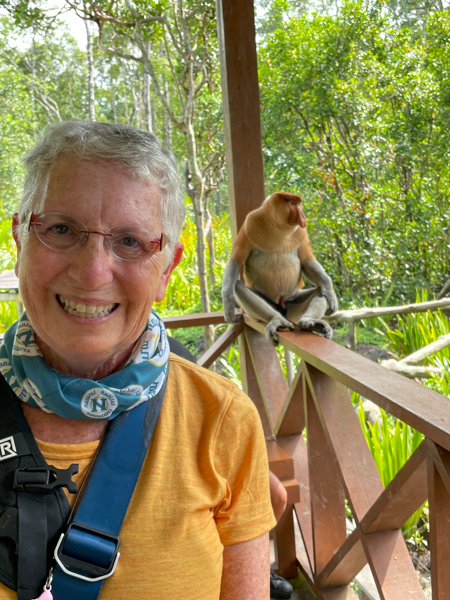

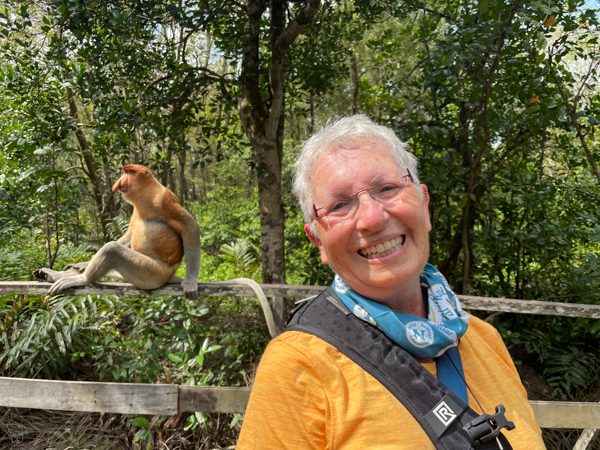
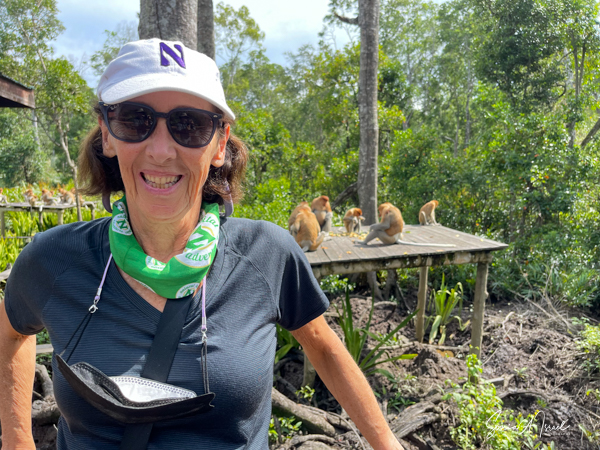
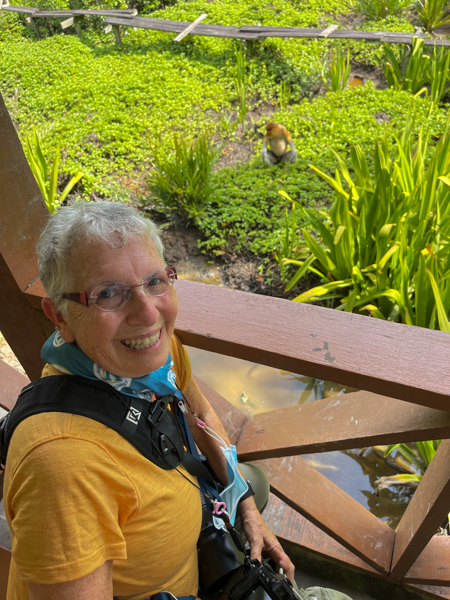
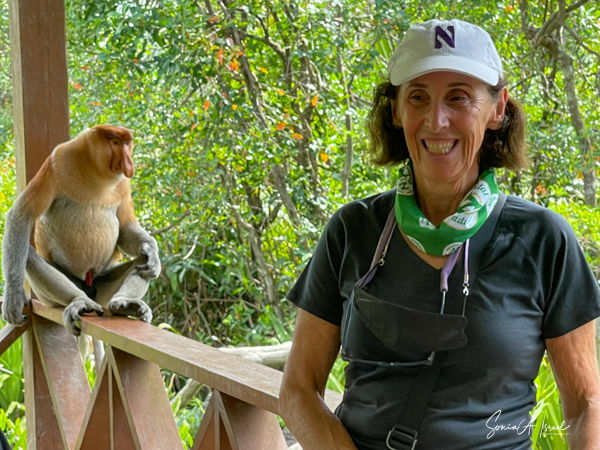

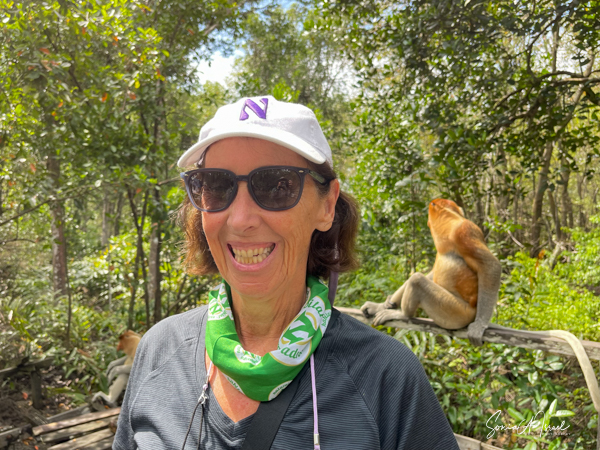





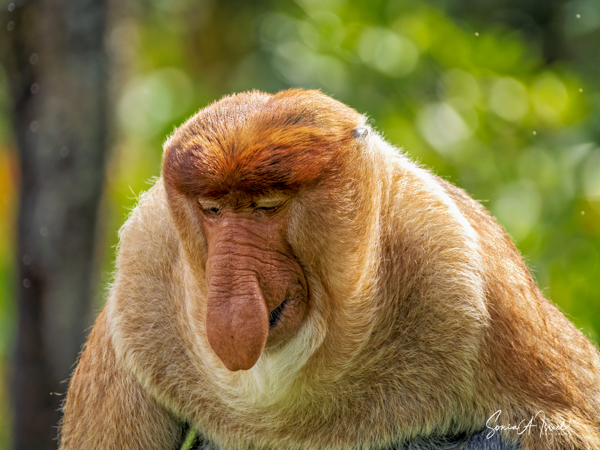
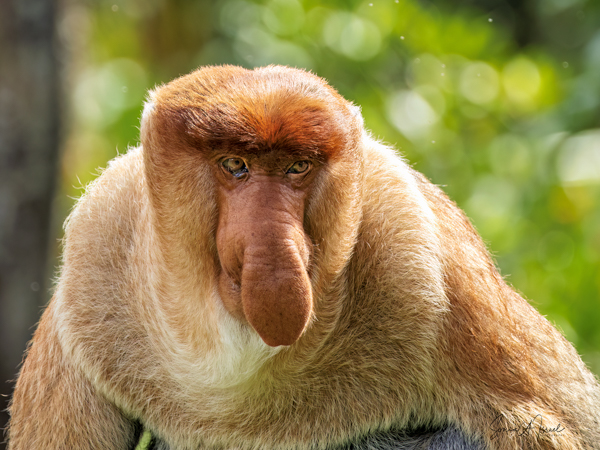
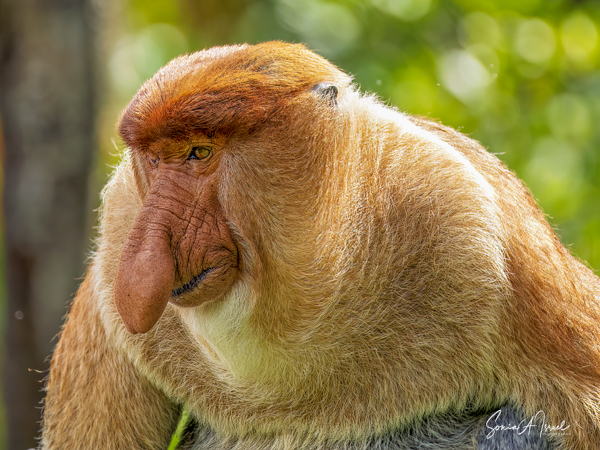

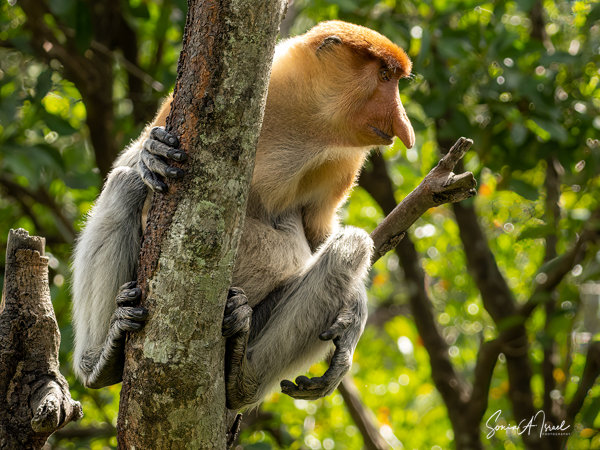
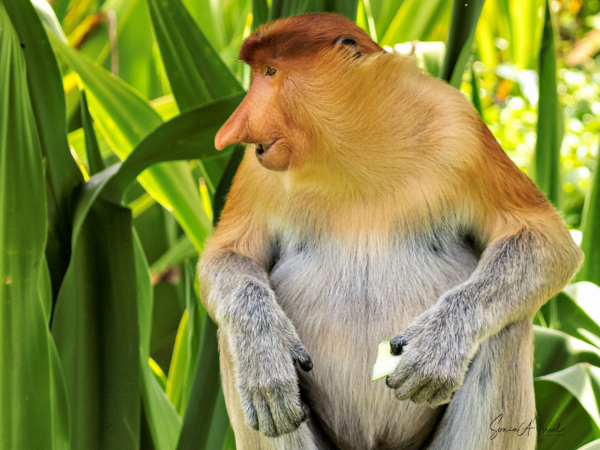
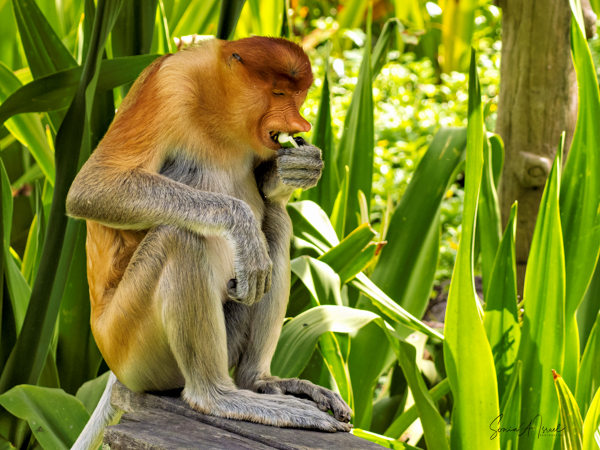
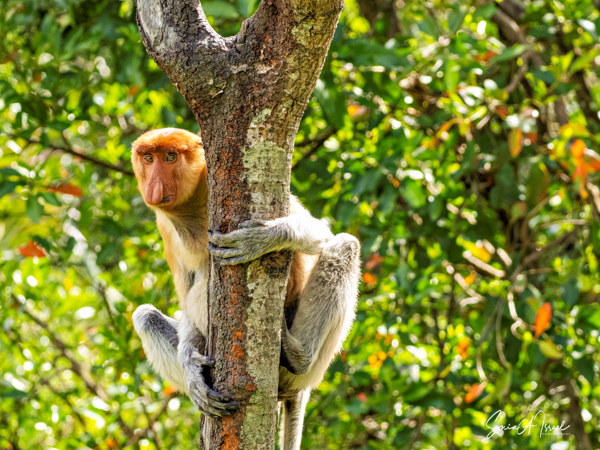

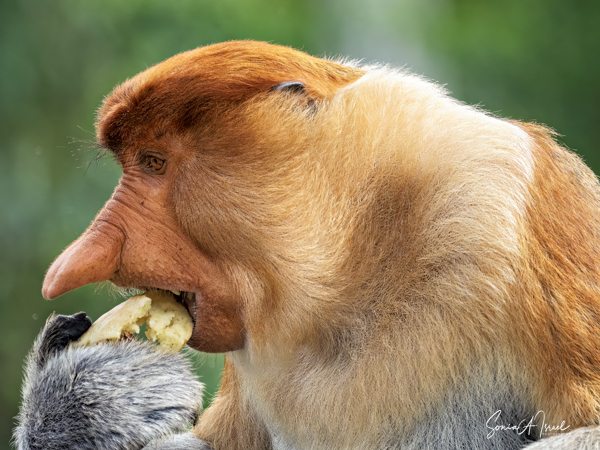
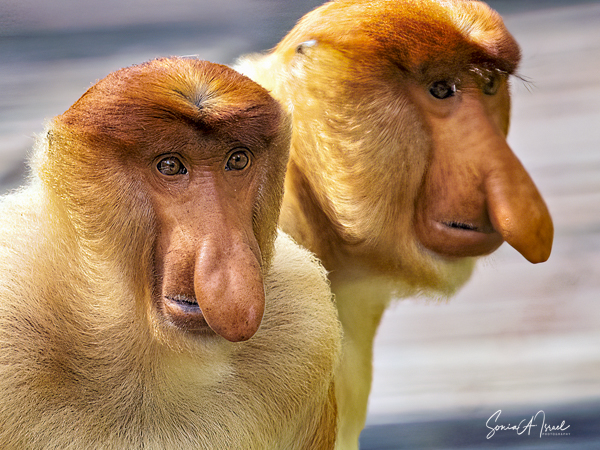
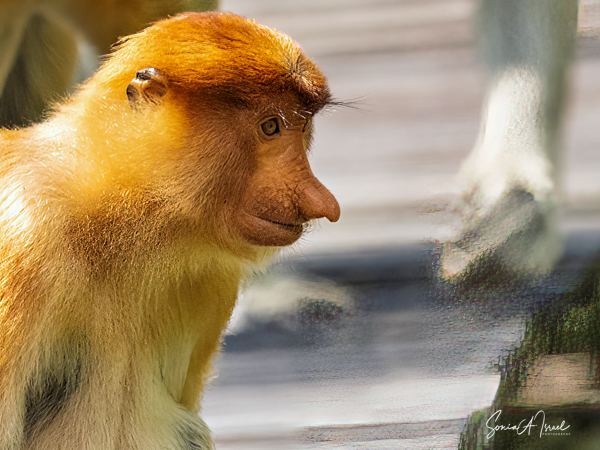
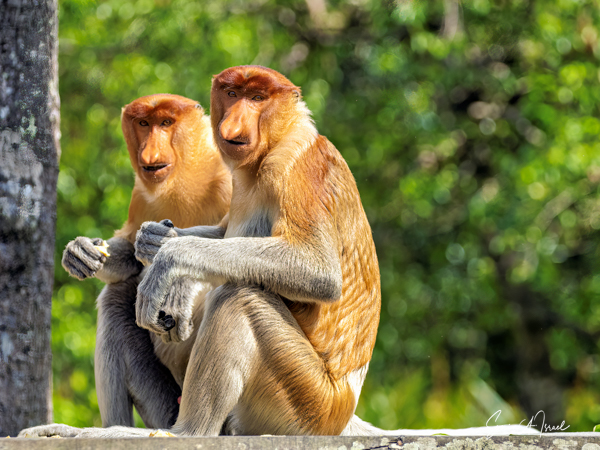
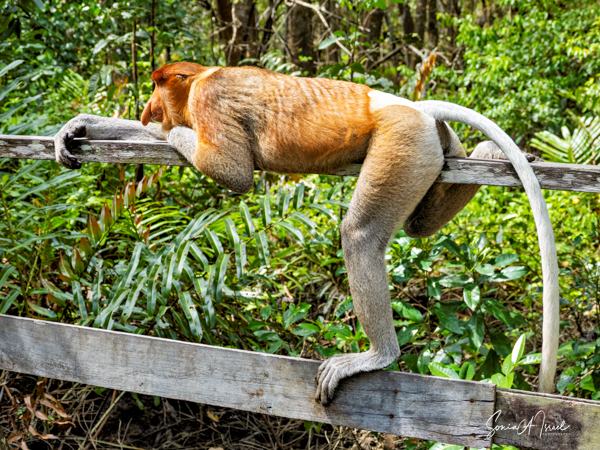
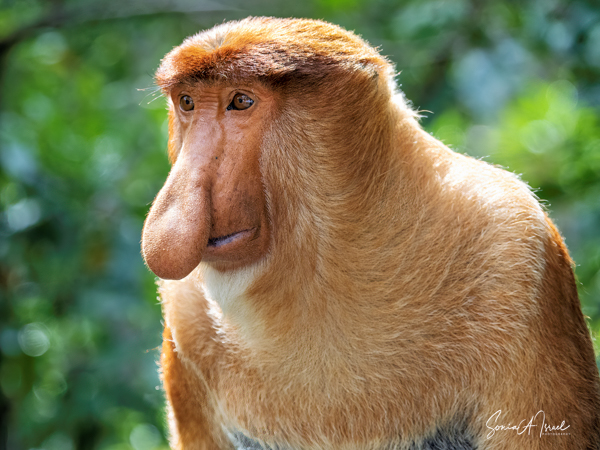

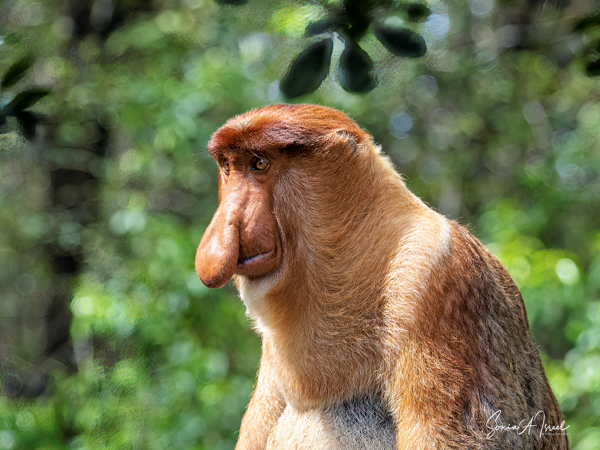
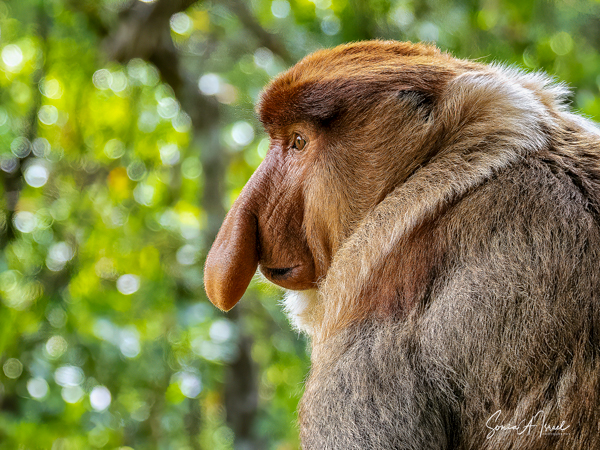
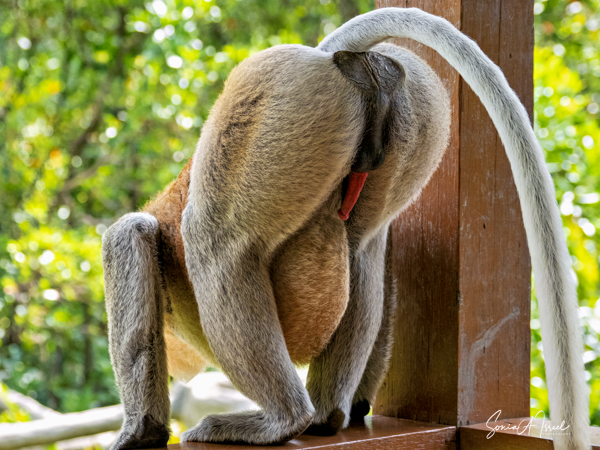

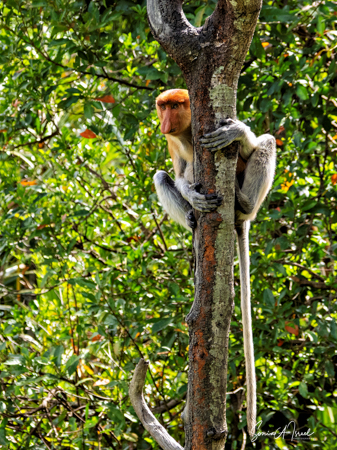
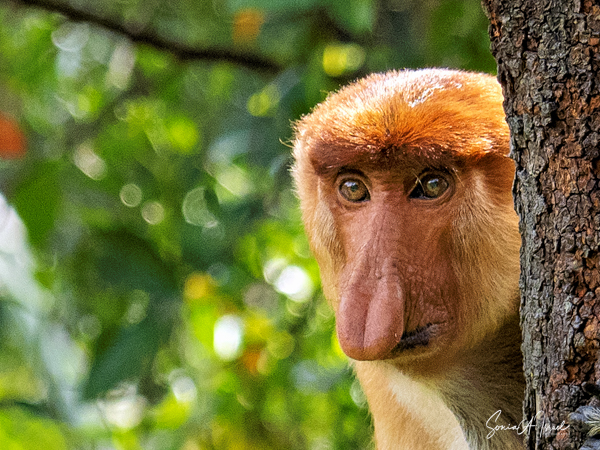
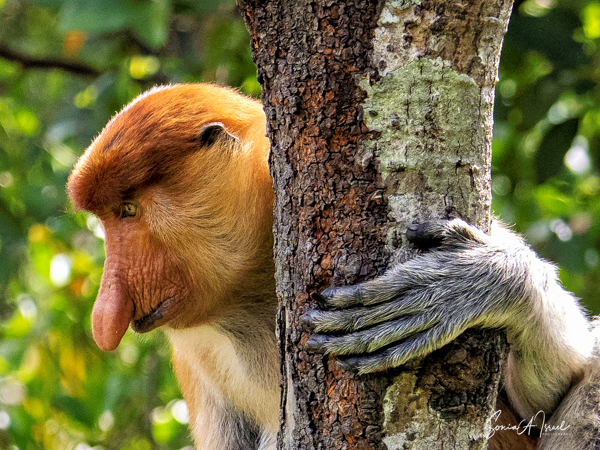

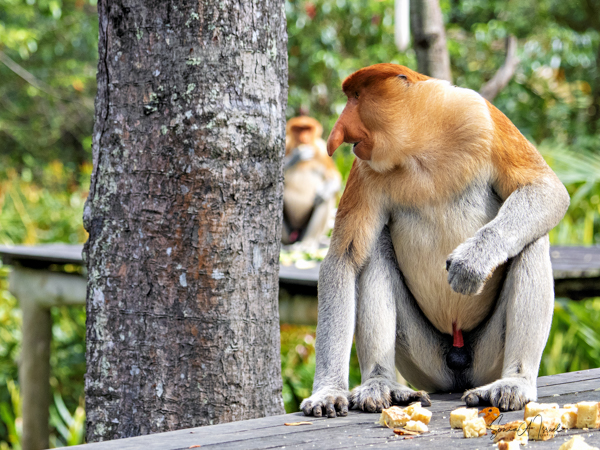

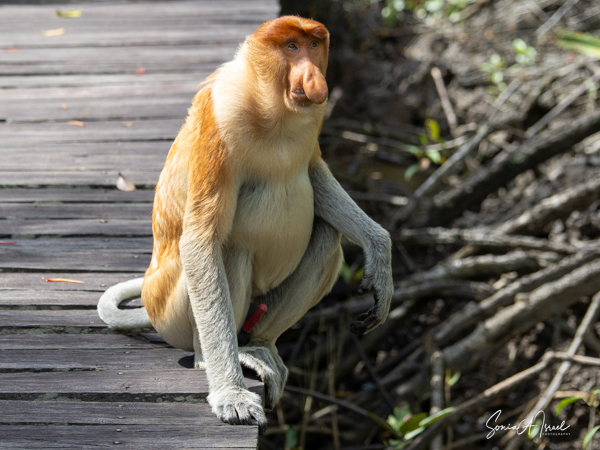
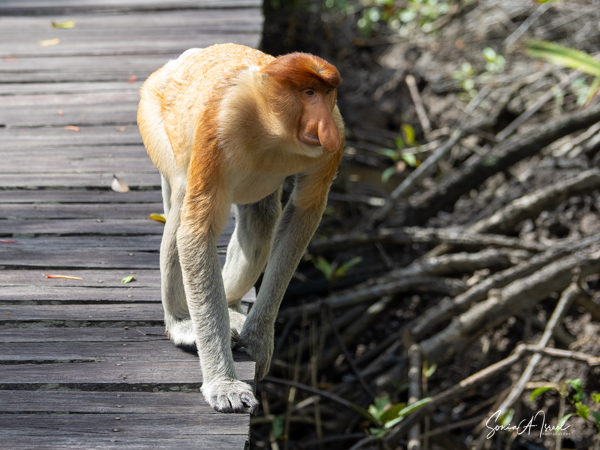

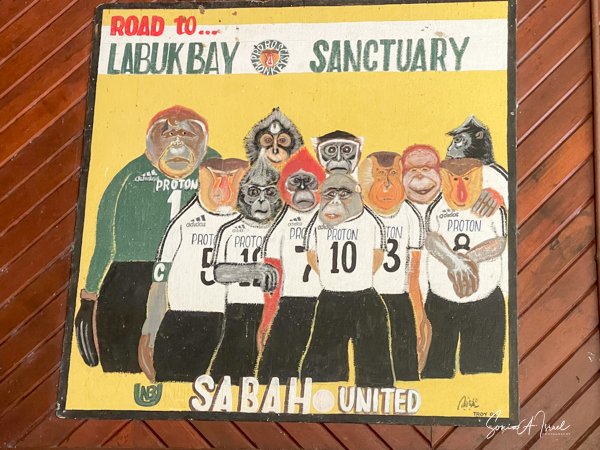
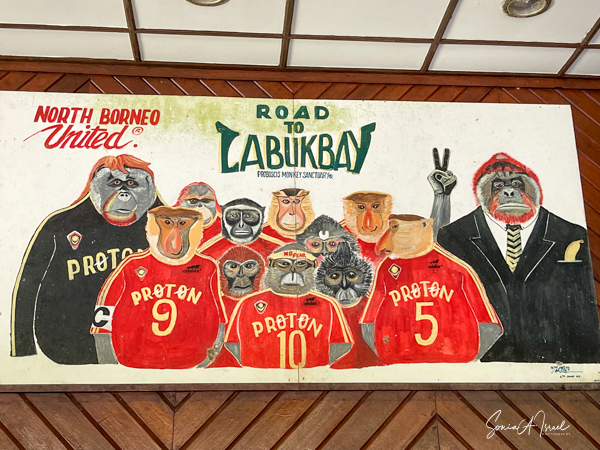
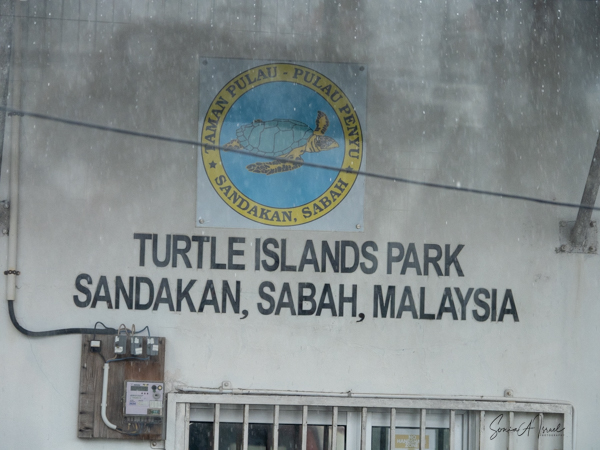
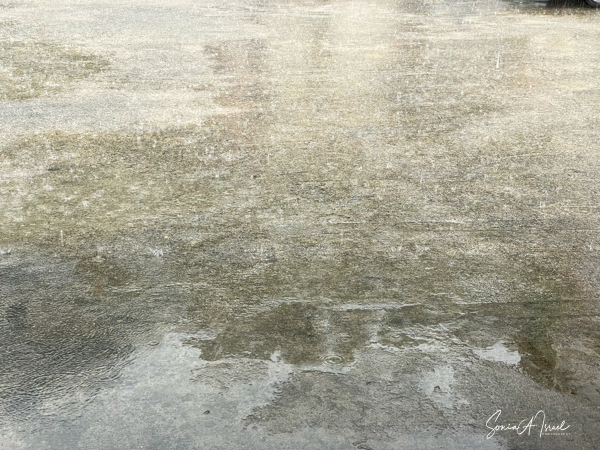
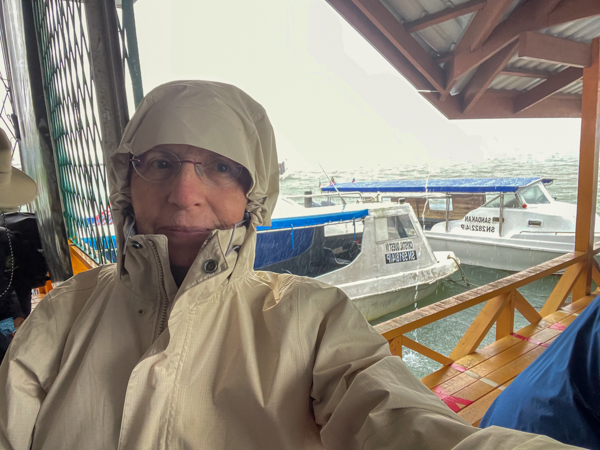
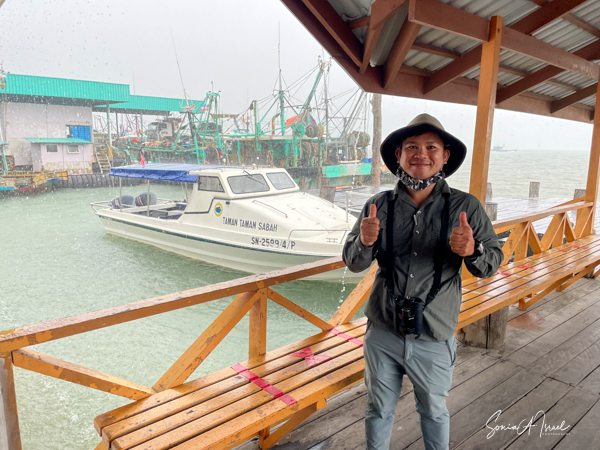
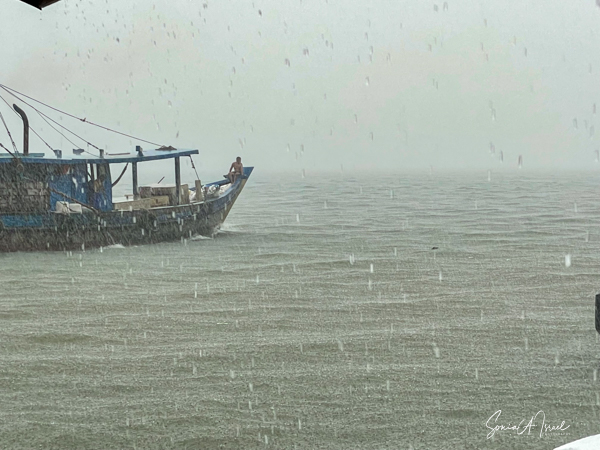
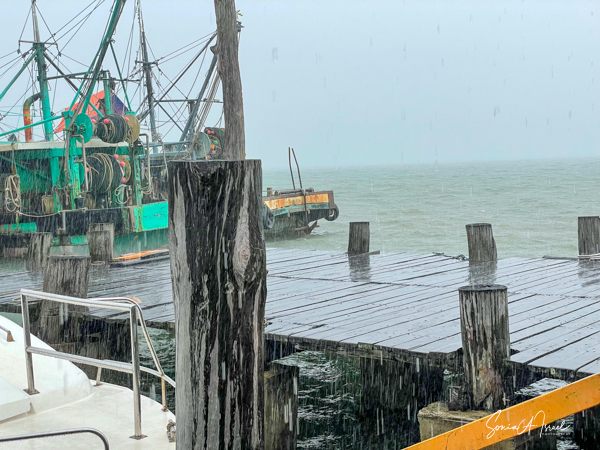
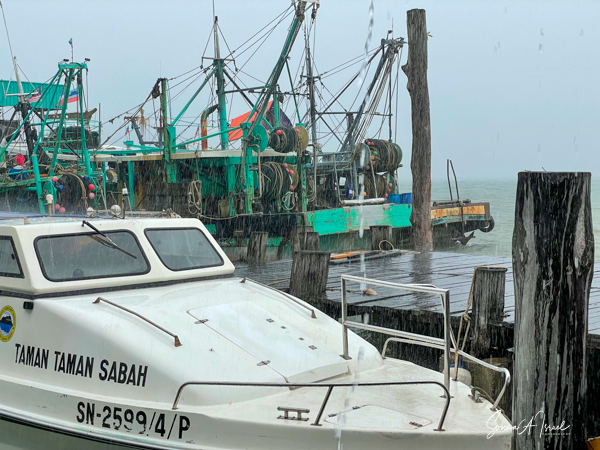

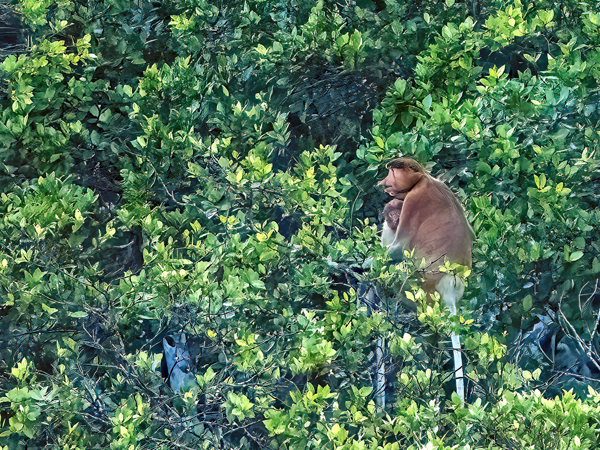
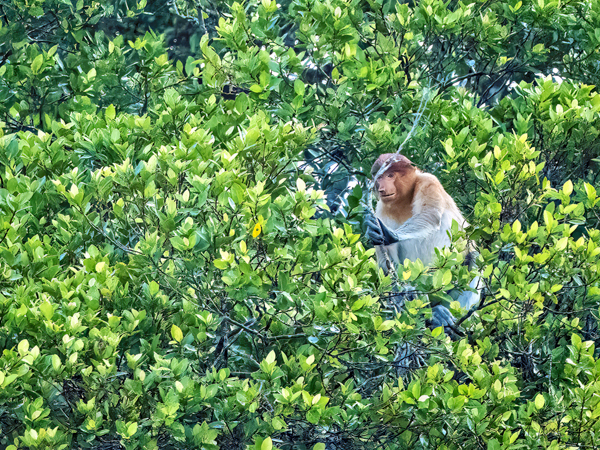
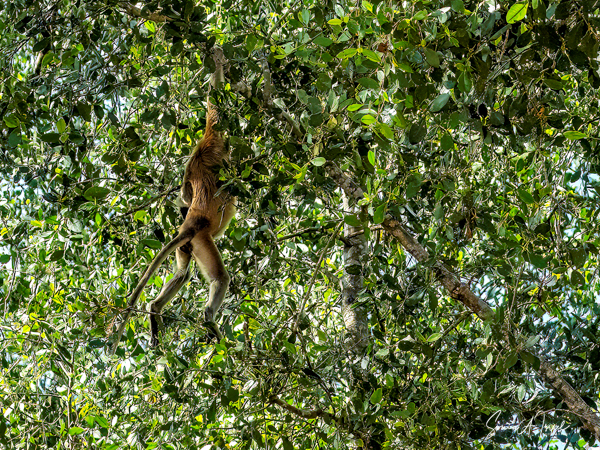
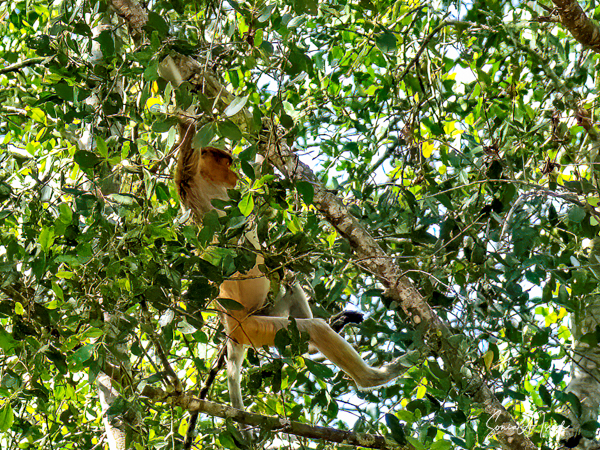
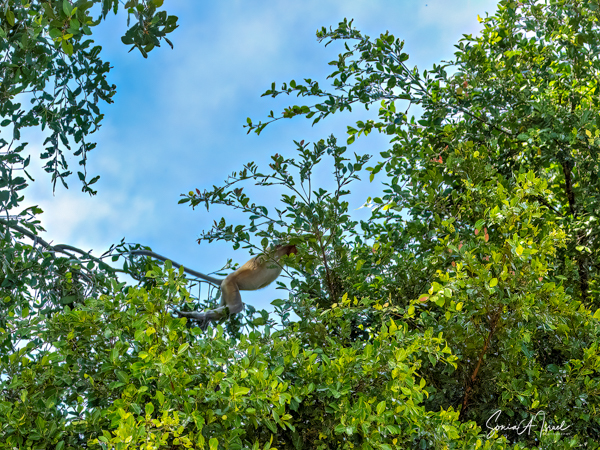
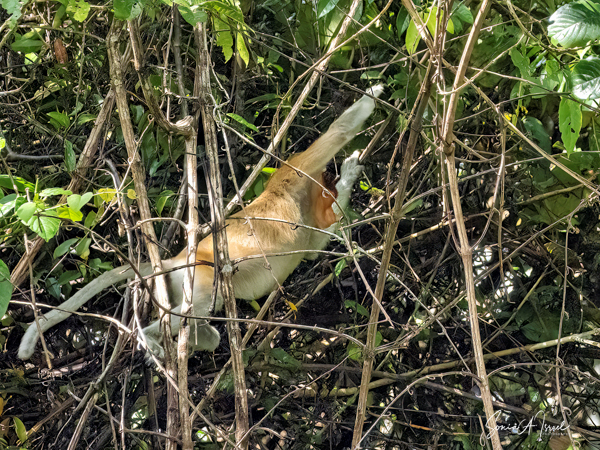

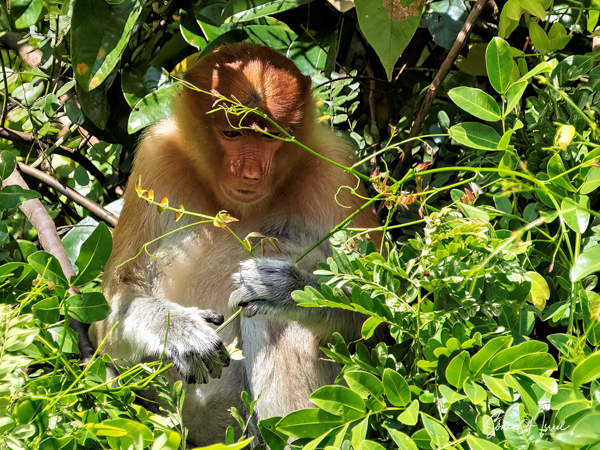
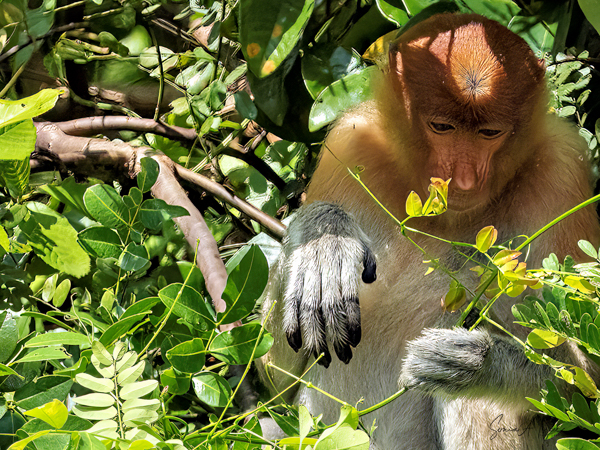
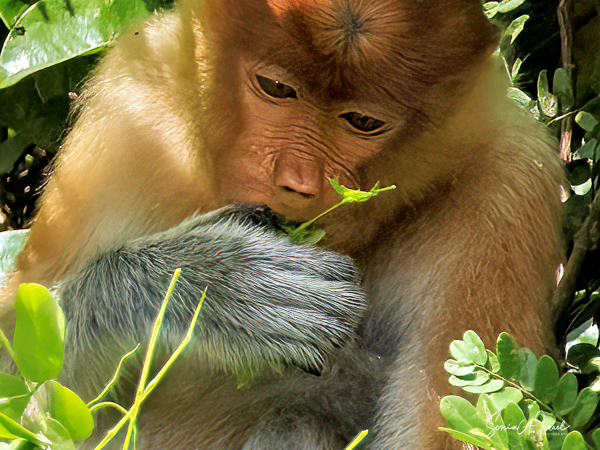
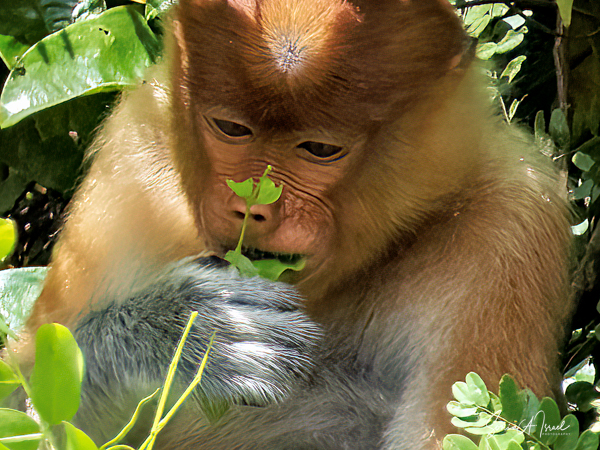
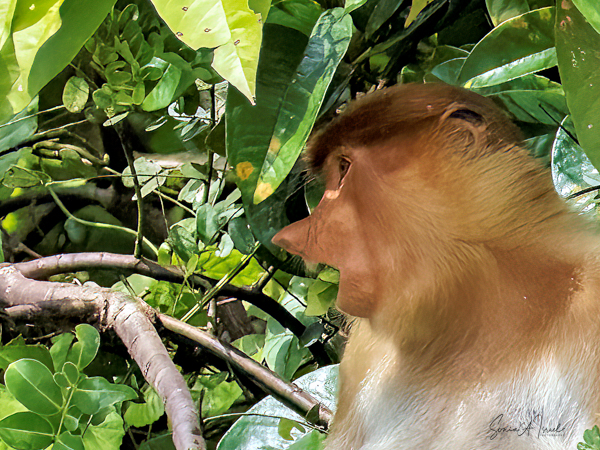
Johanne Mathurin
Hello Sonia, I really enjoy this post. I went to Borneo few years ago and had the opportunity to see them in the wild.
Recently went to the Congo for the lowland eastern gorillas. Very unique.
( Meet you in Pantanal)
Angela Armass
Thank you for taking me o pm this fascinating adventure, and for introducing them to these darling funny looking guys. I hope we can all do something to help these monkeys from extinction. My daughter is very active in avoiding products that contain palm oil. Take care!
Joan Chesner
Fascinating!